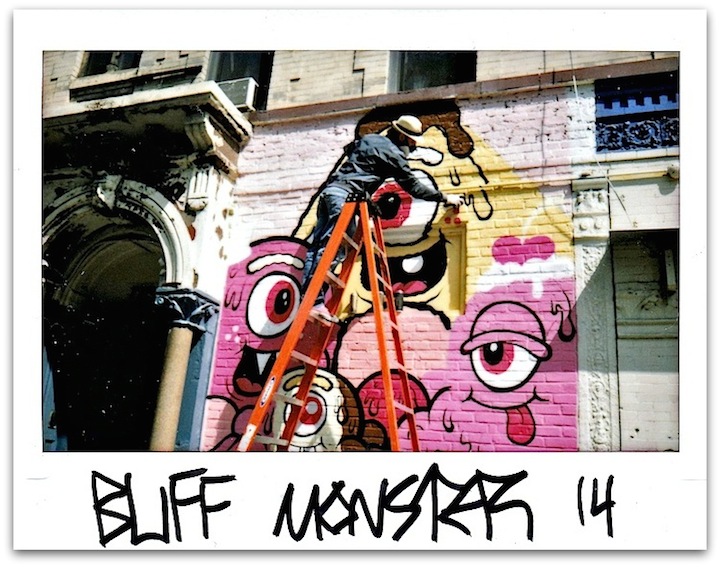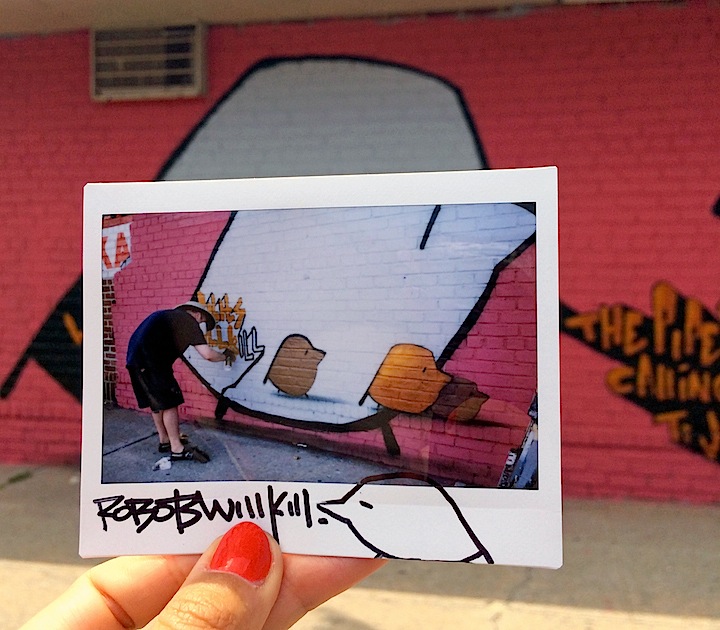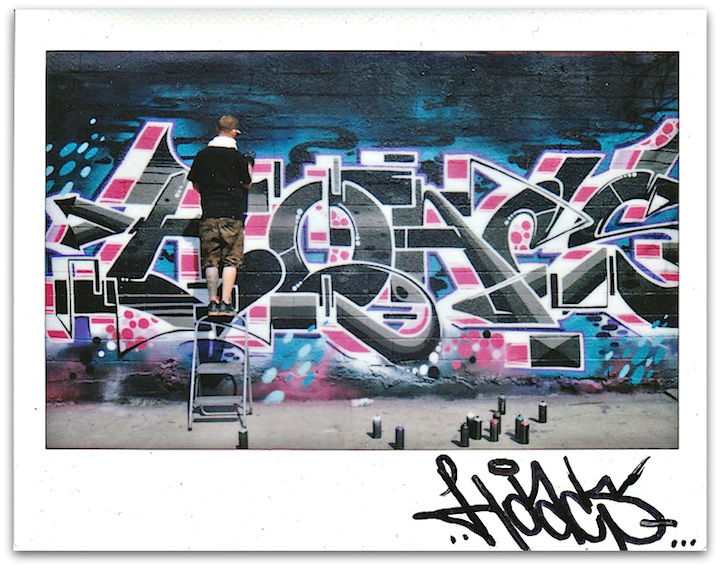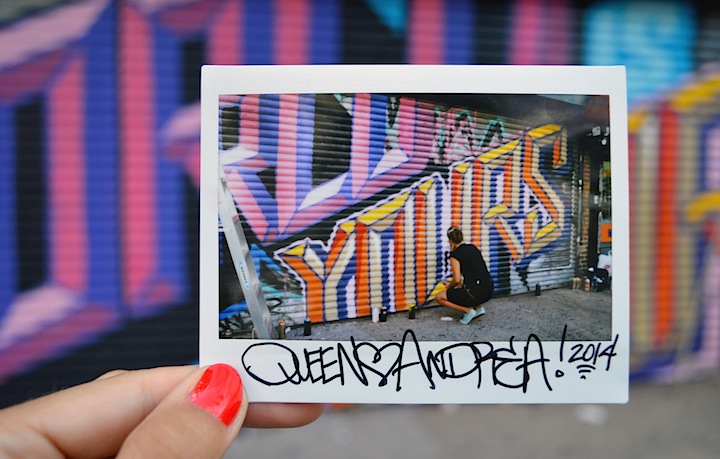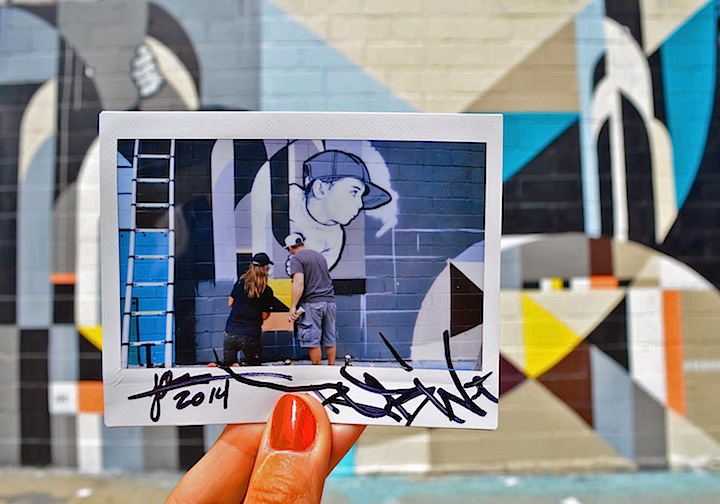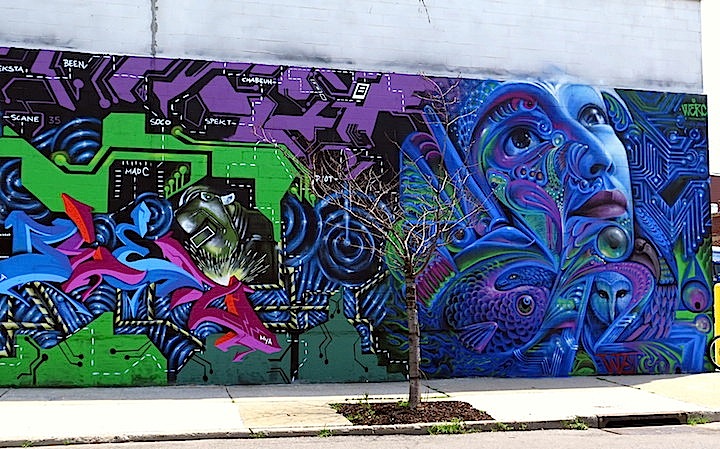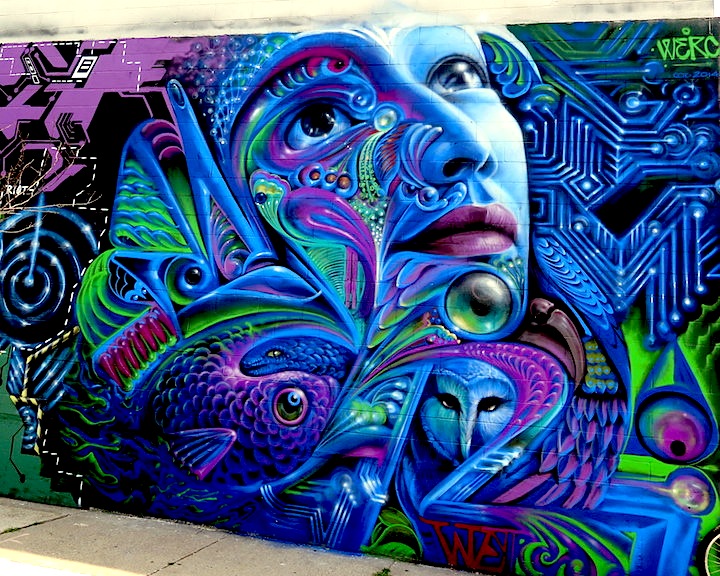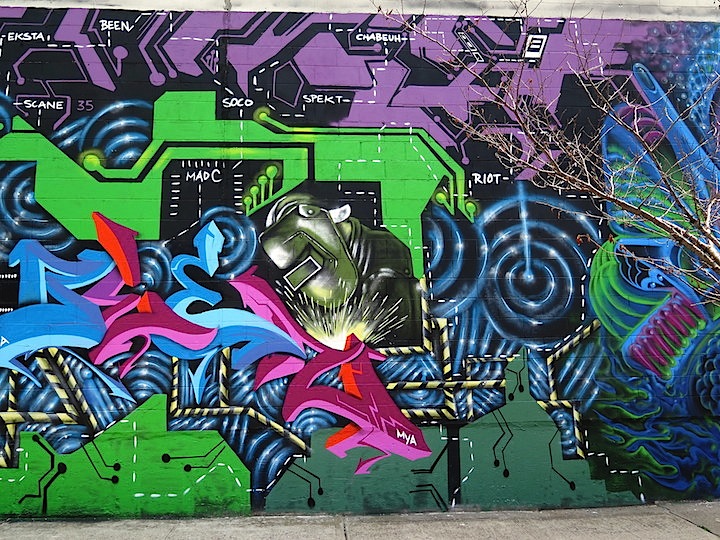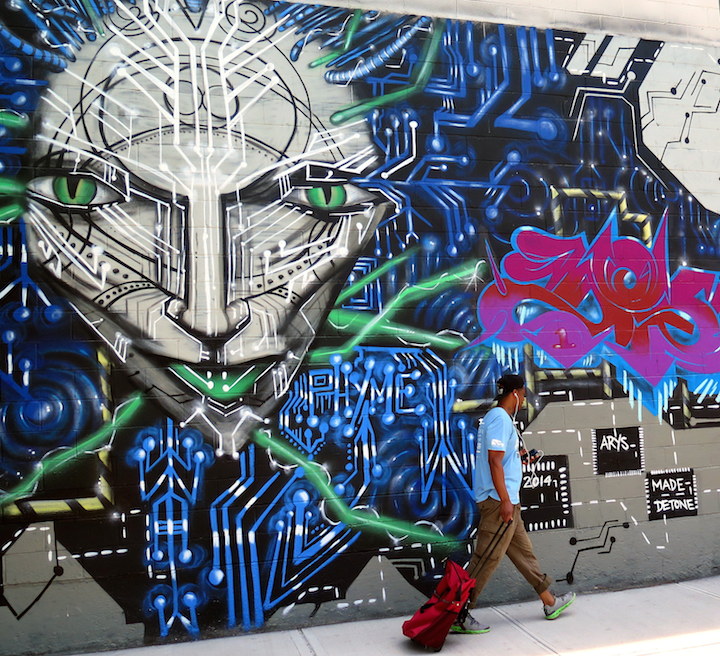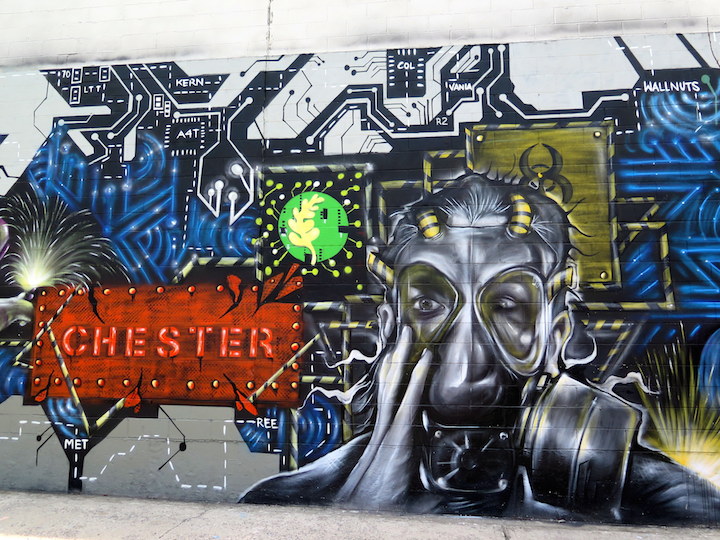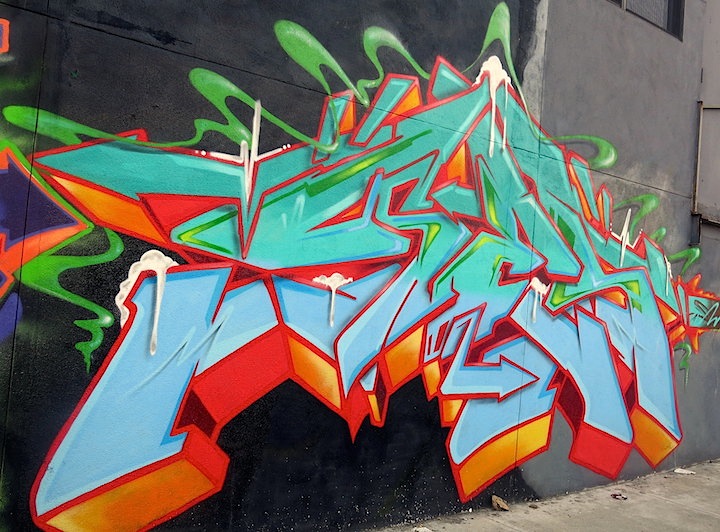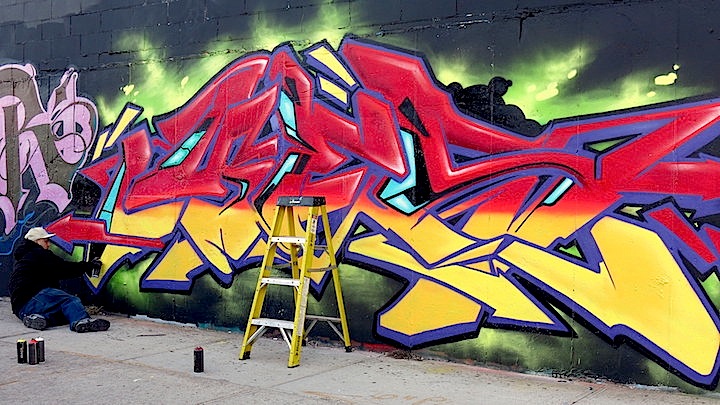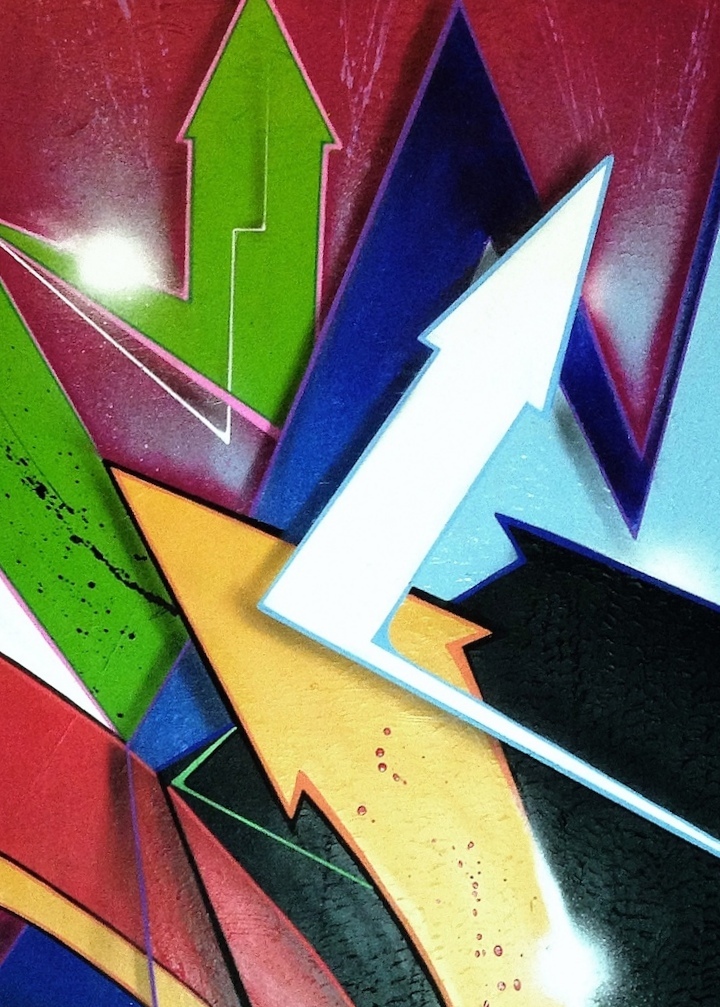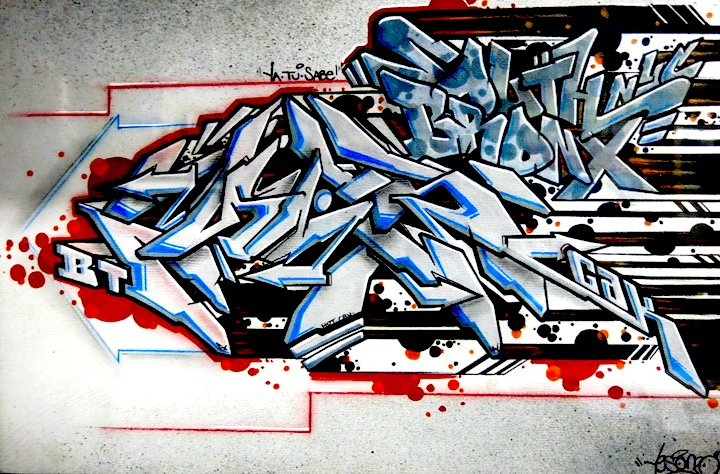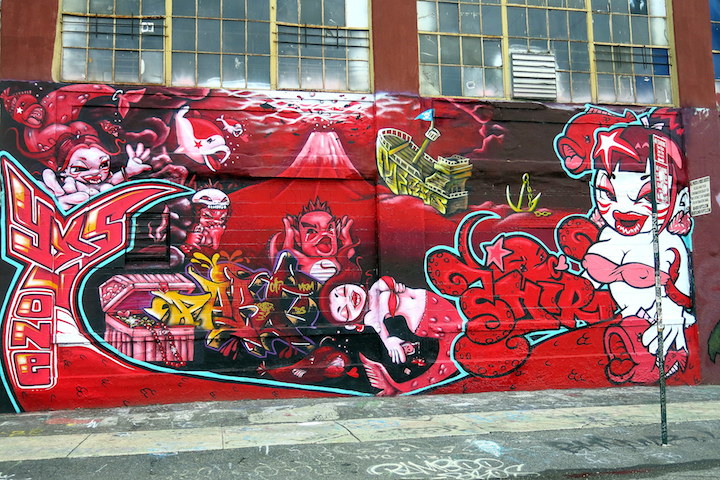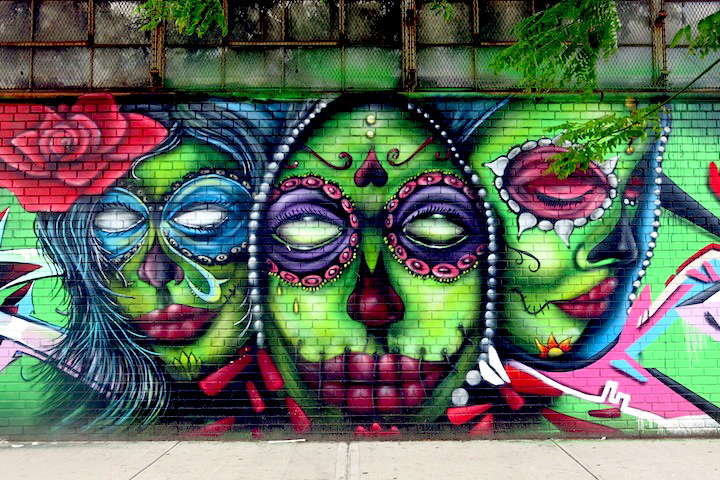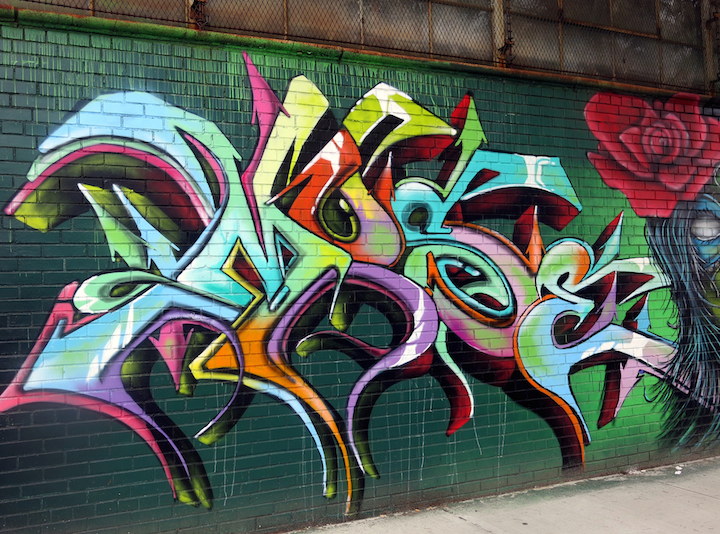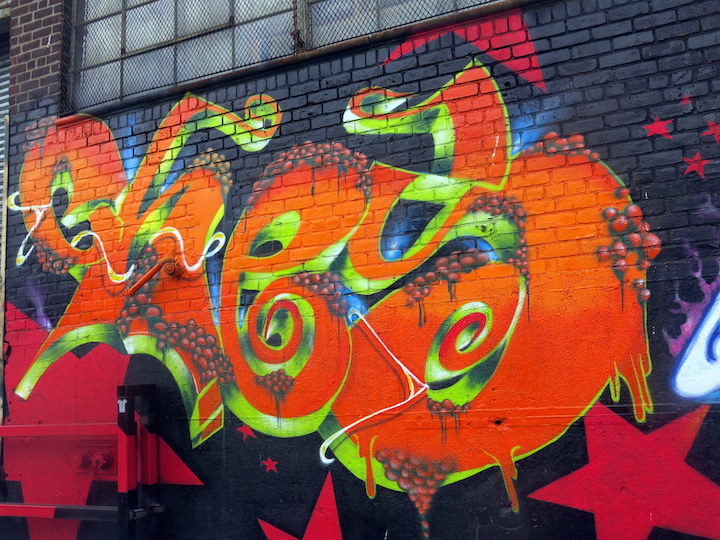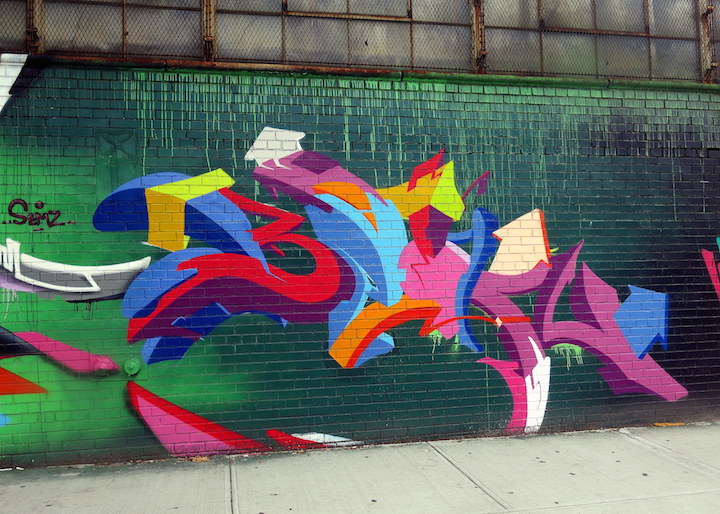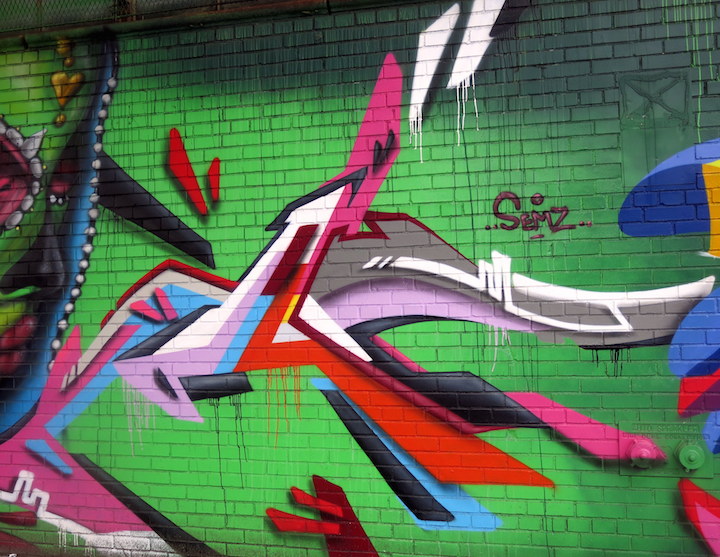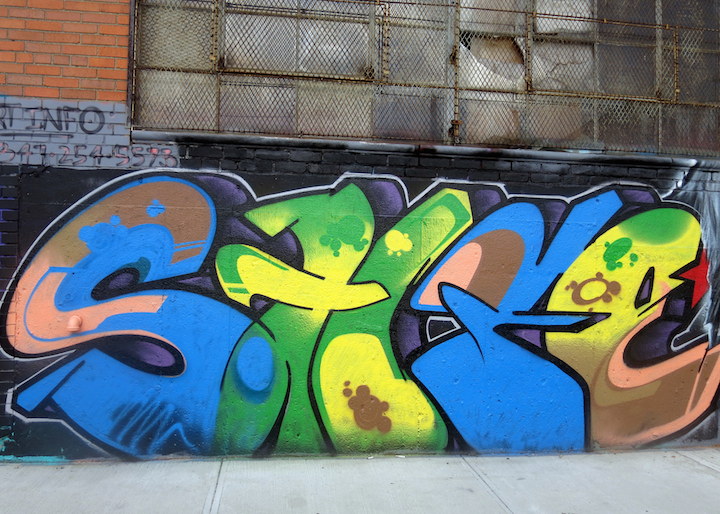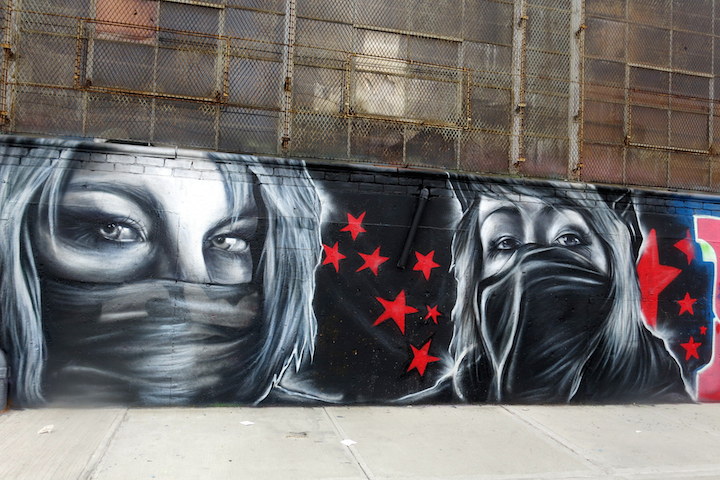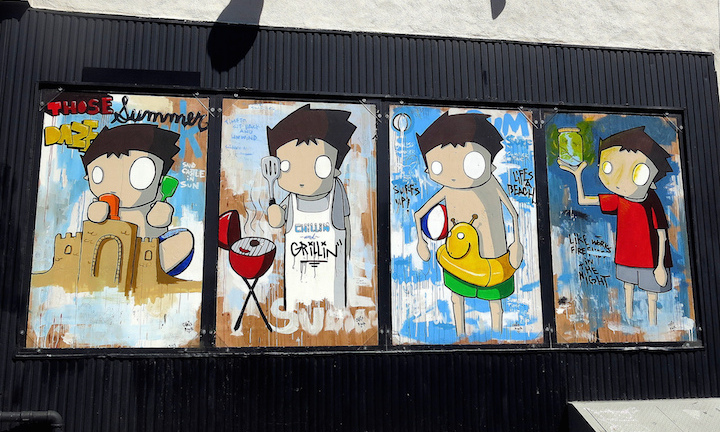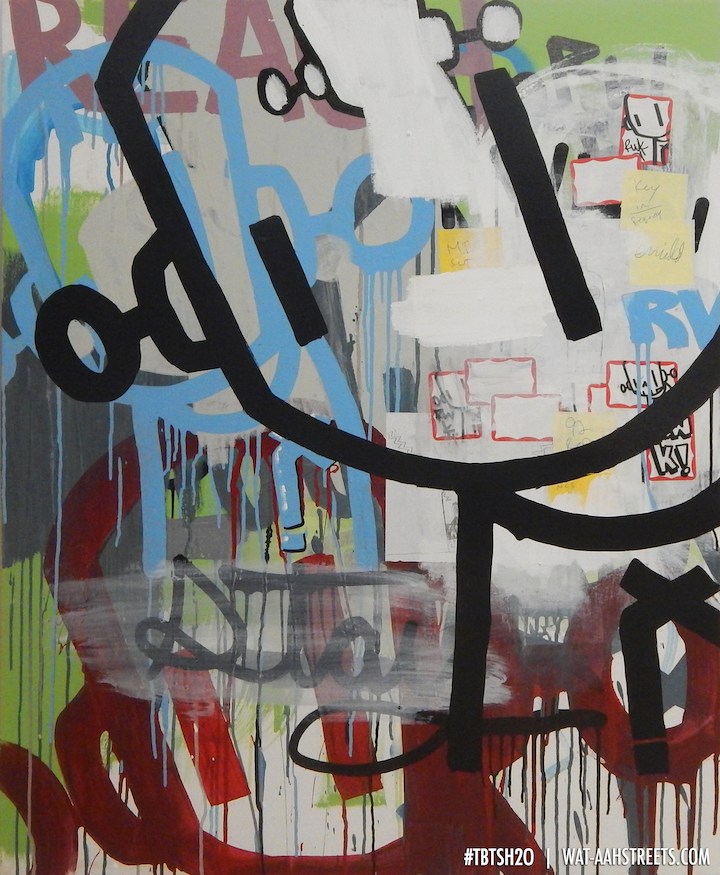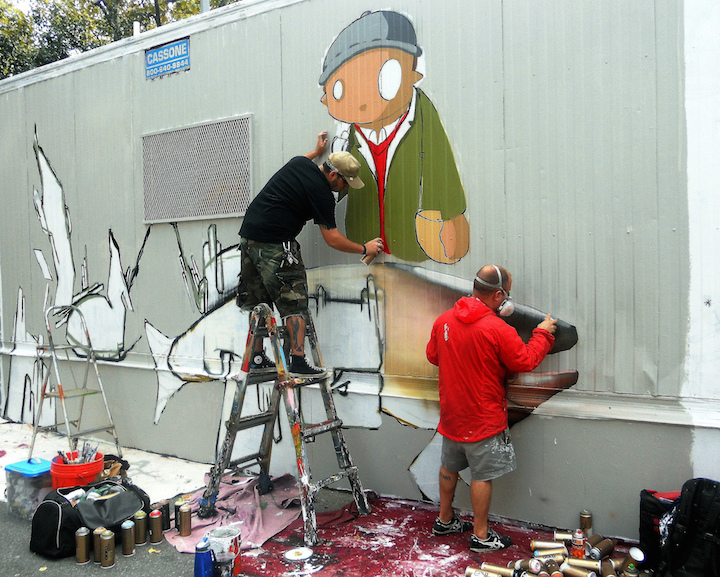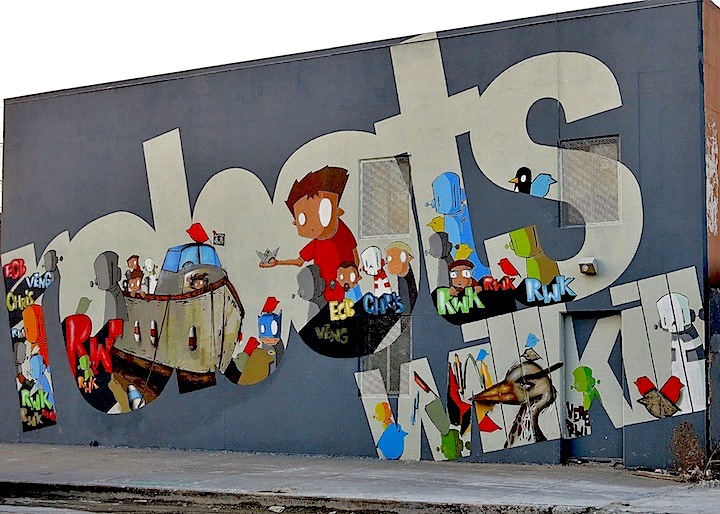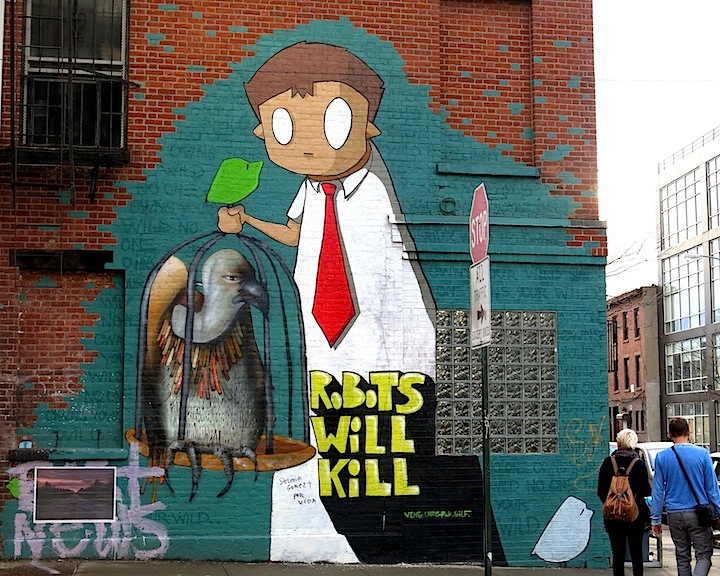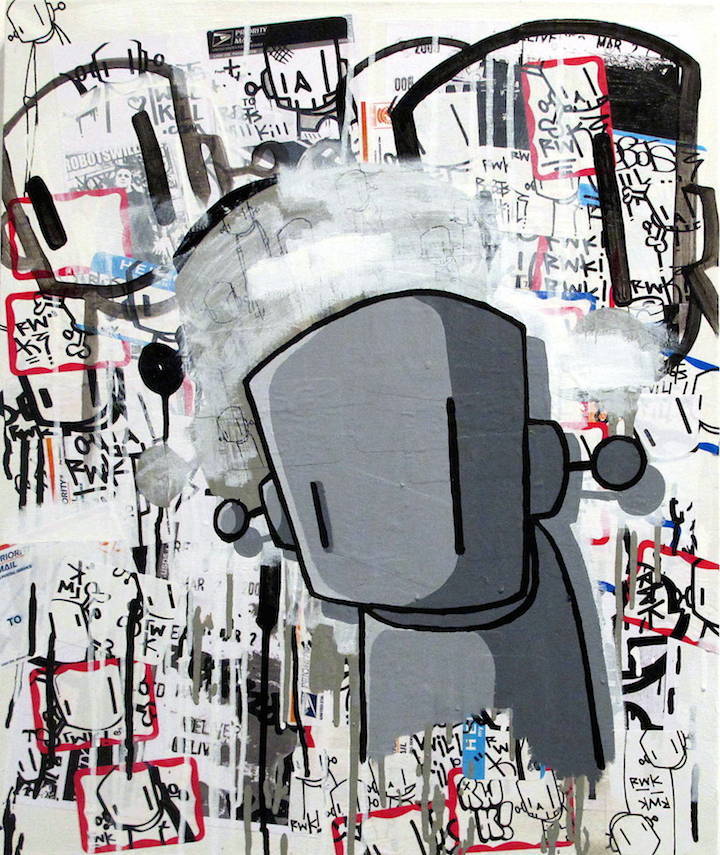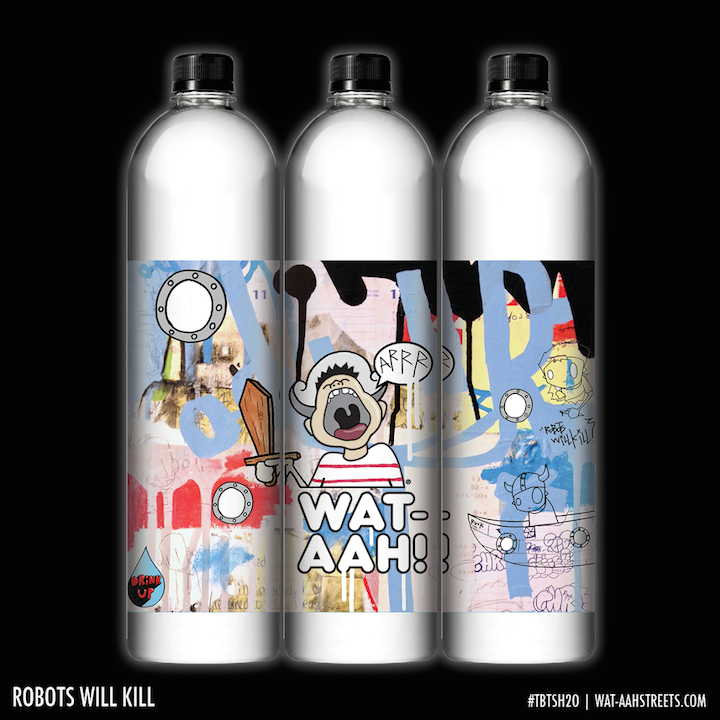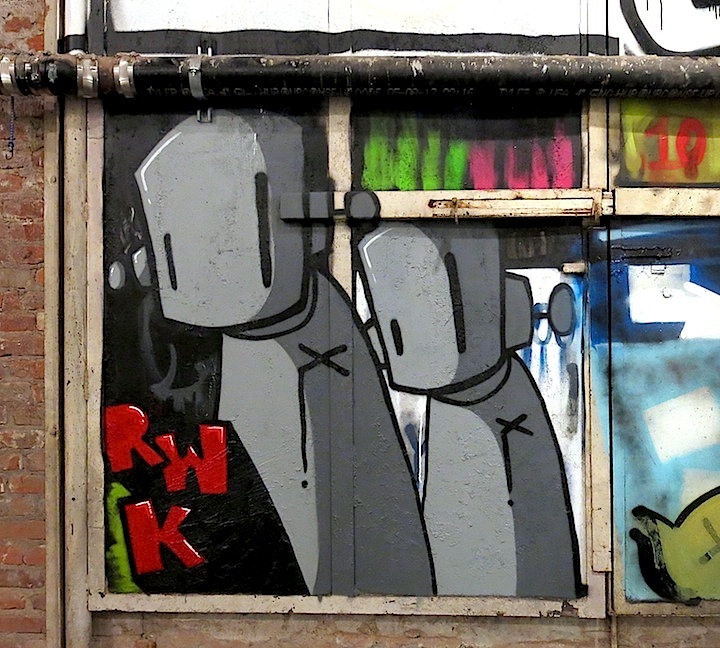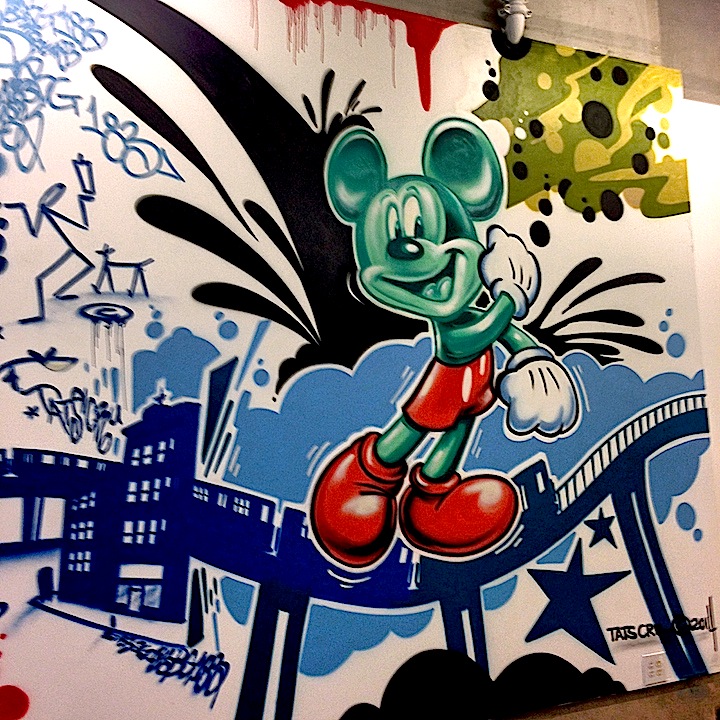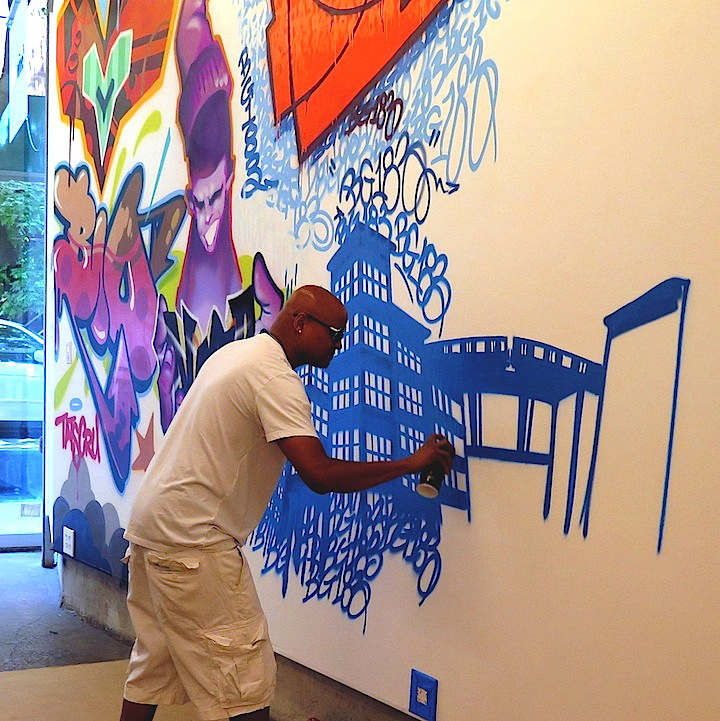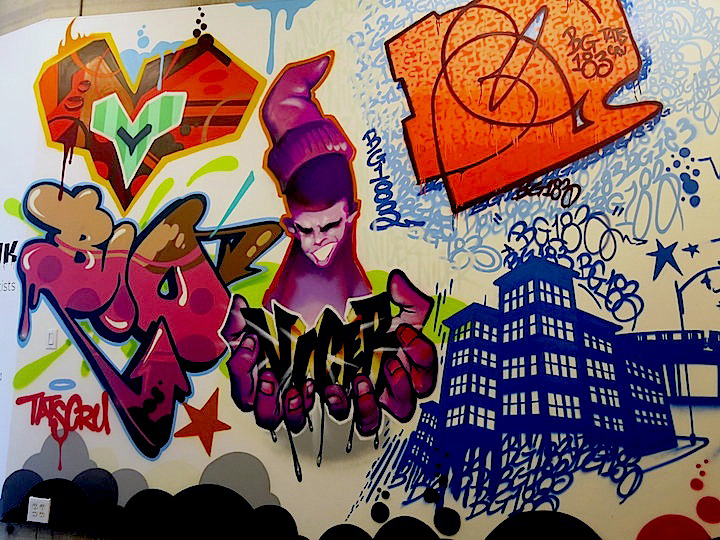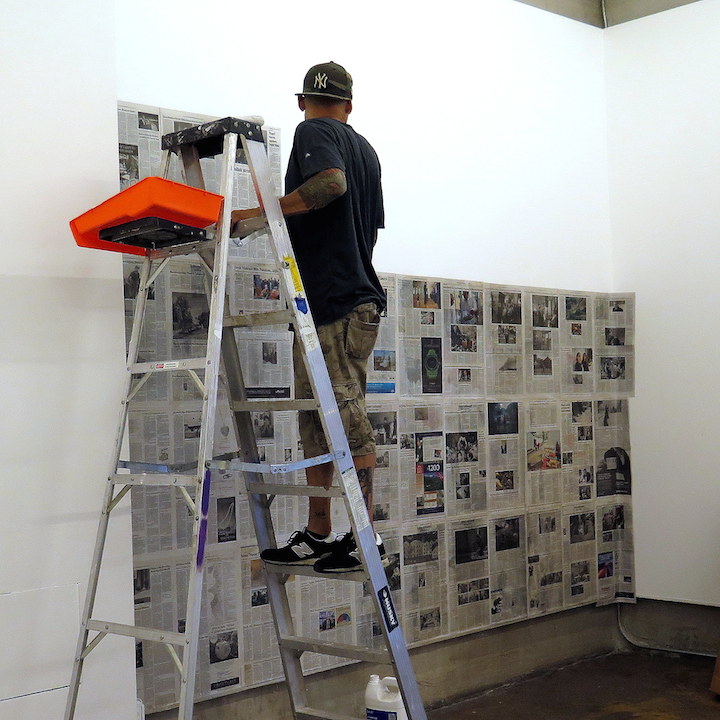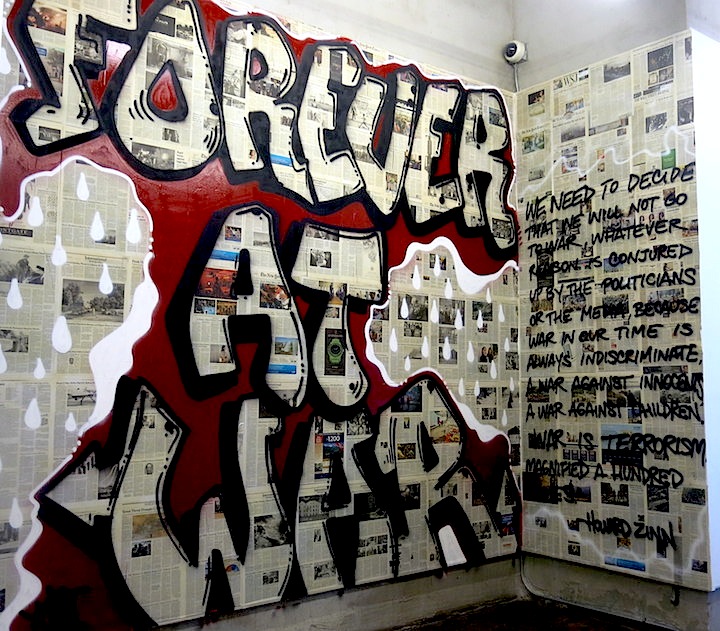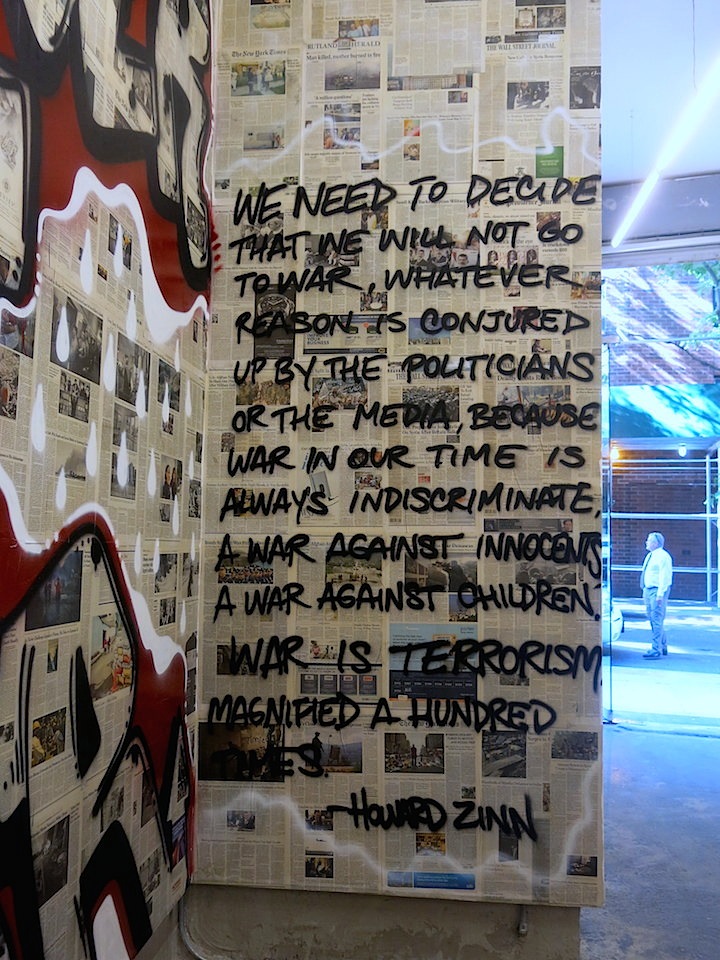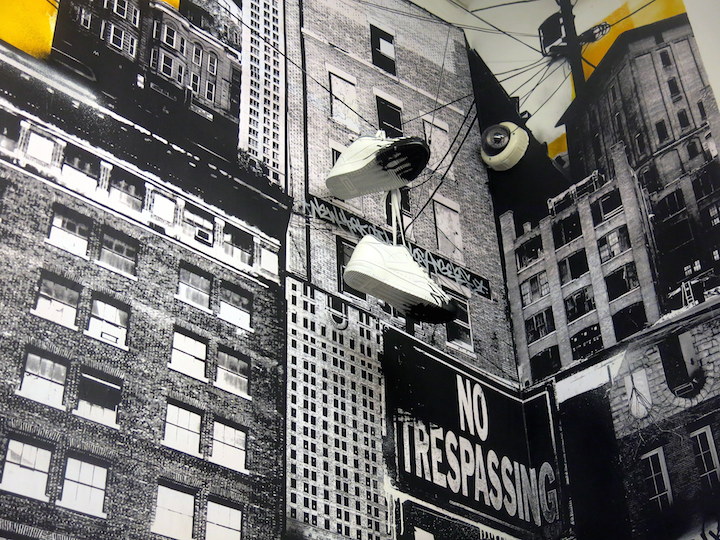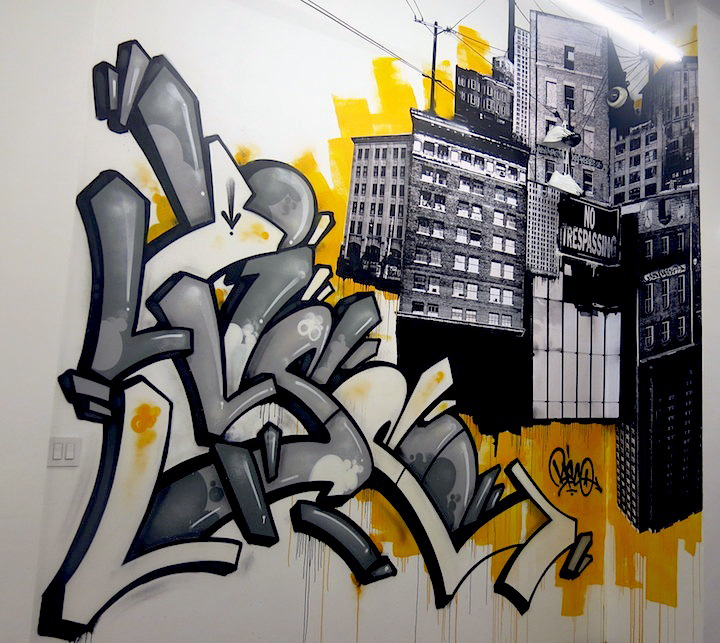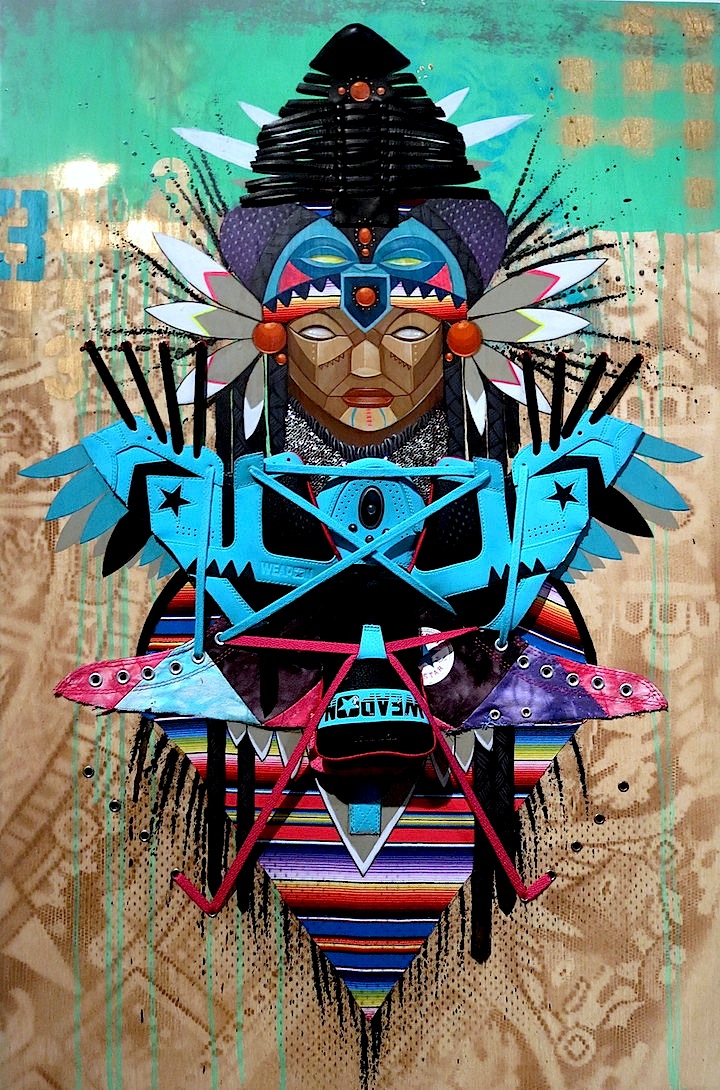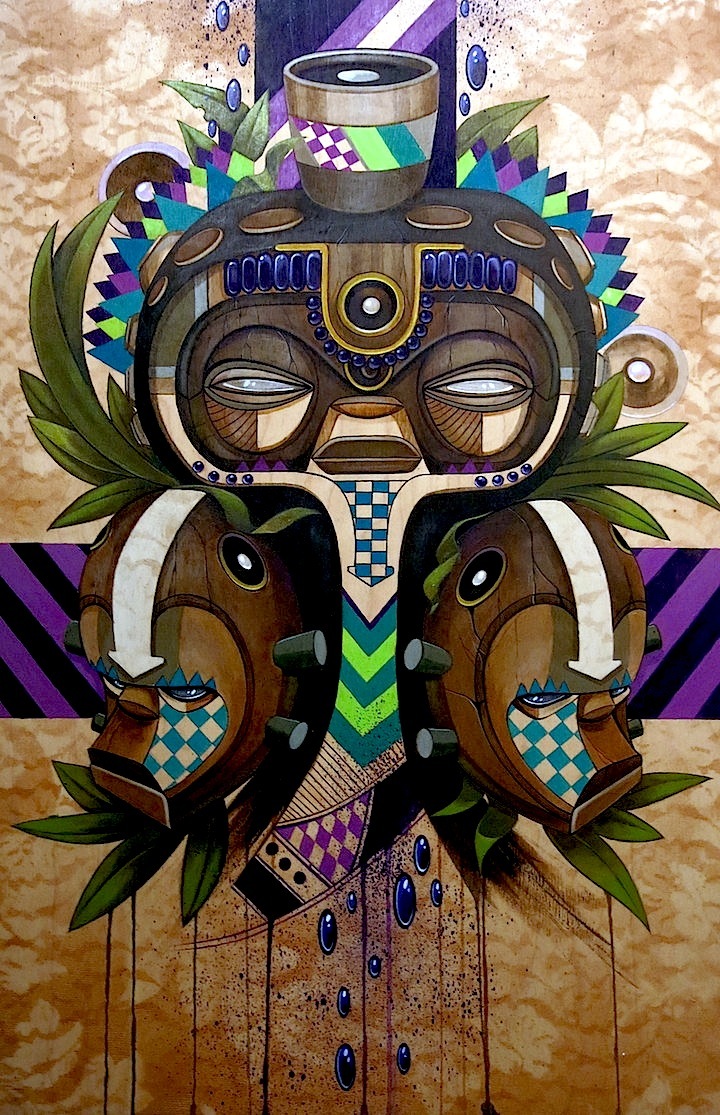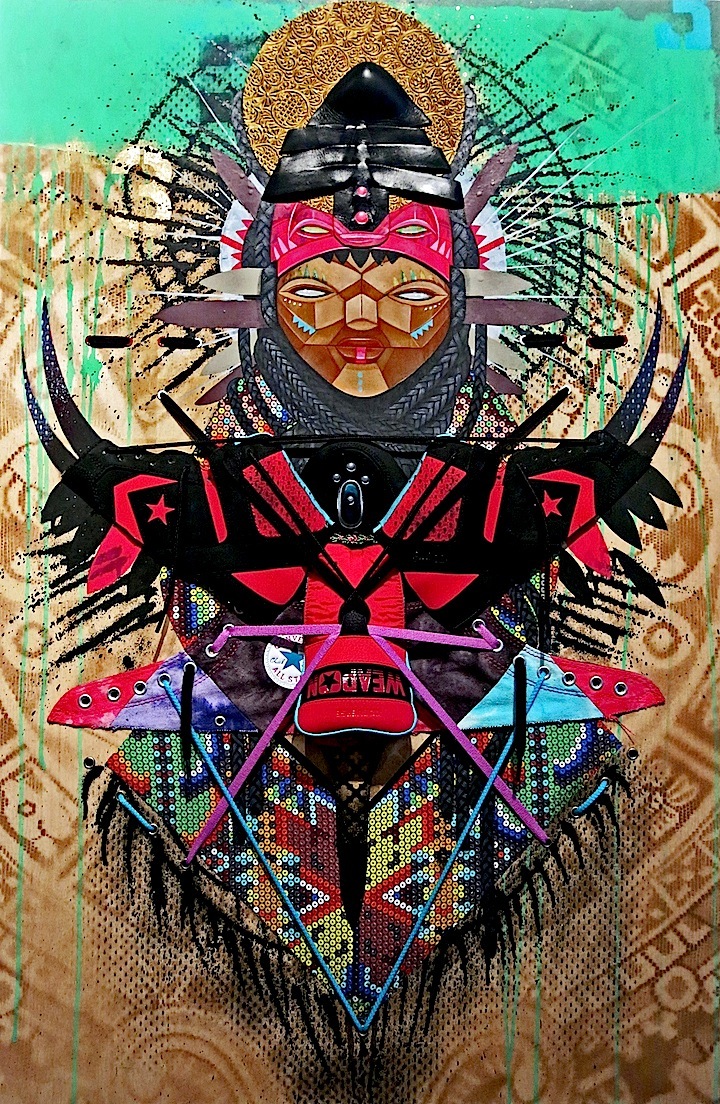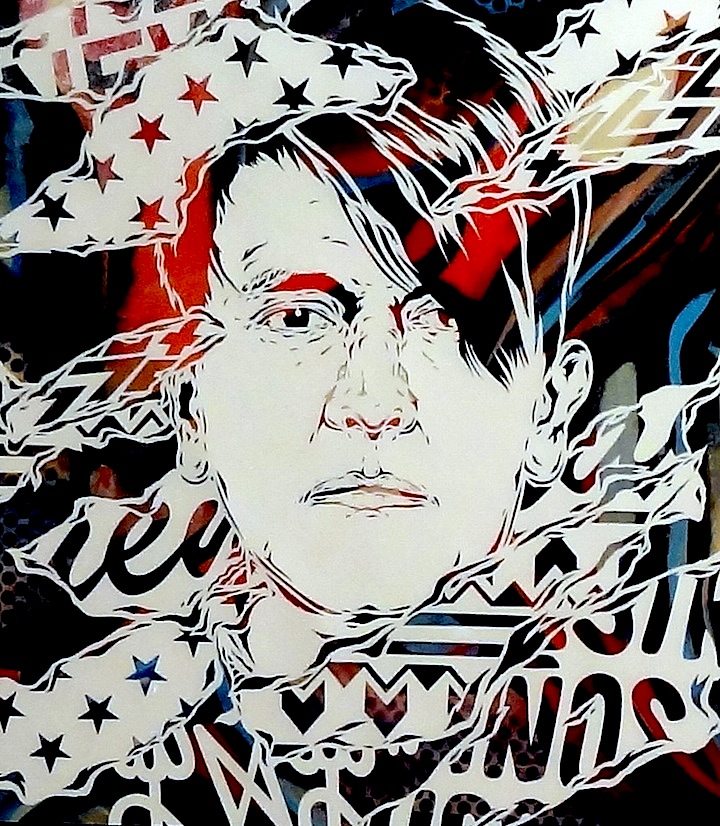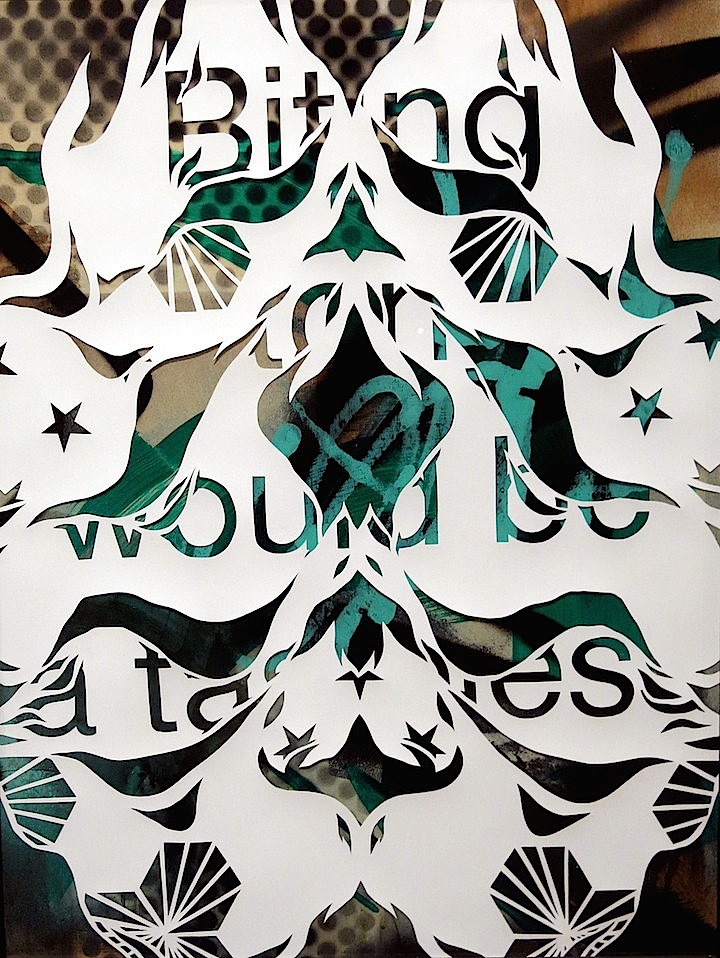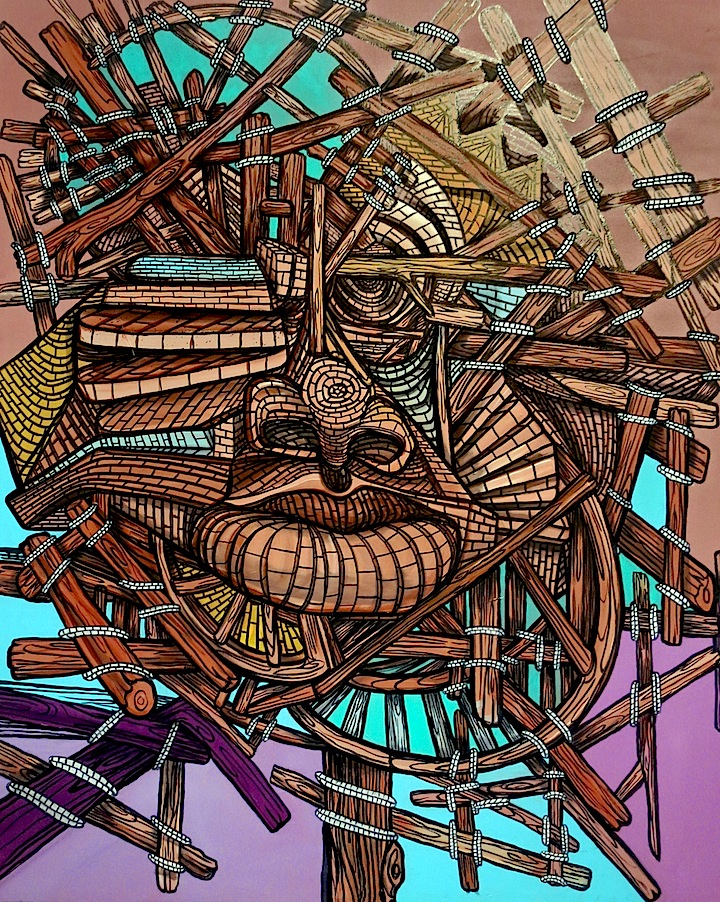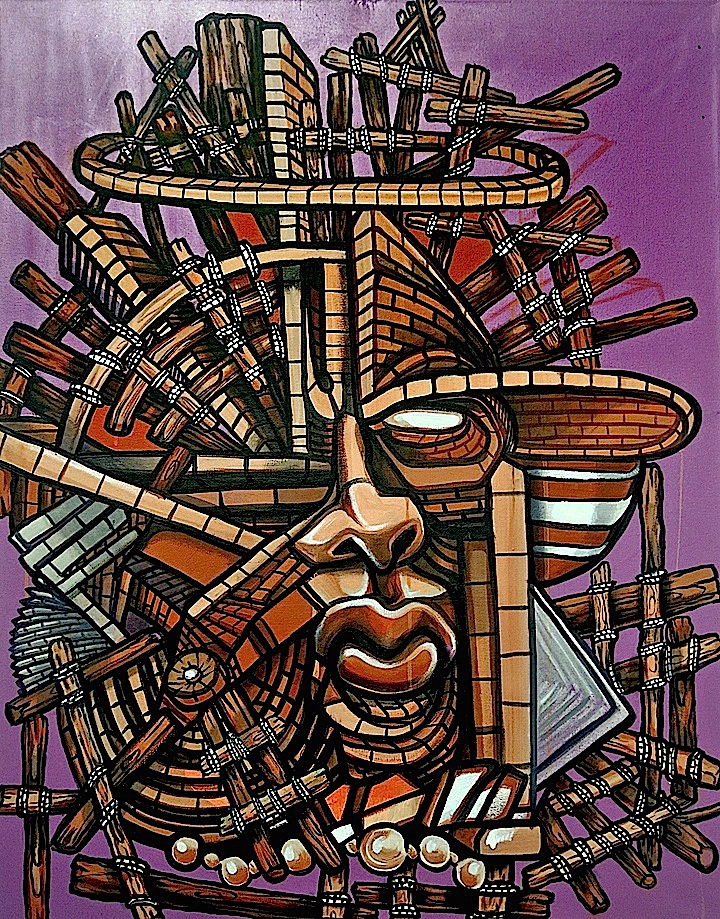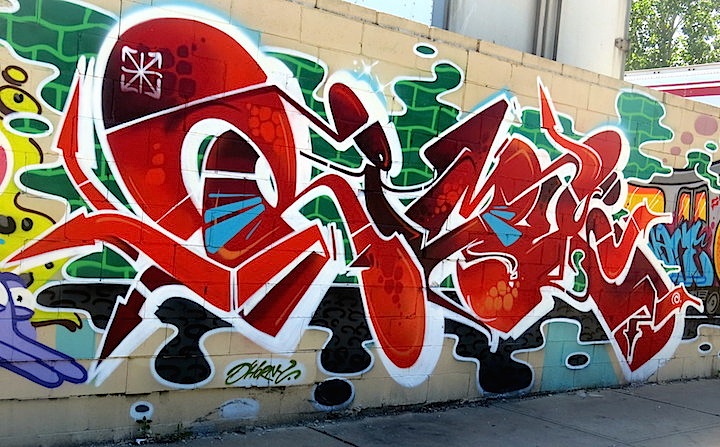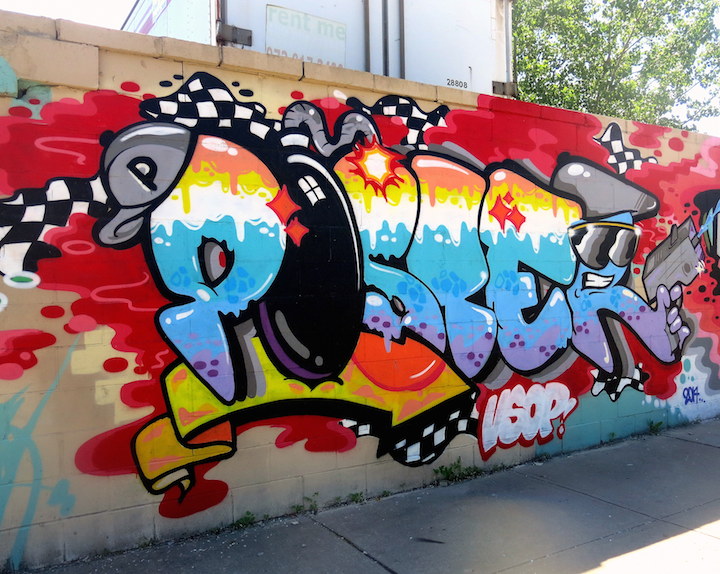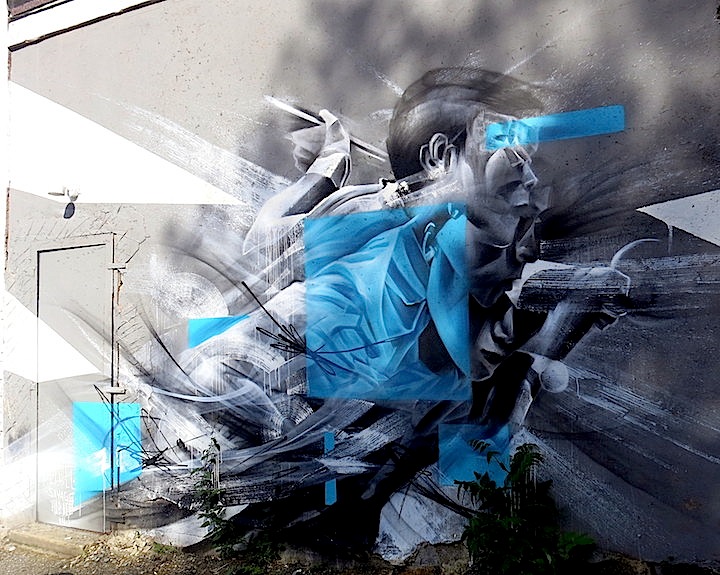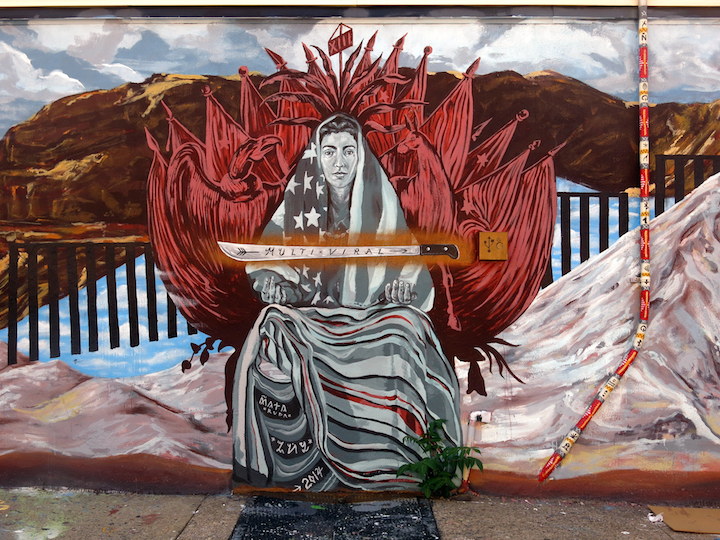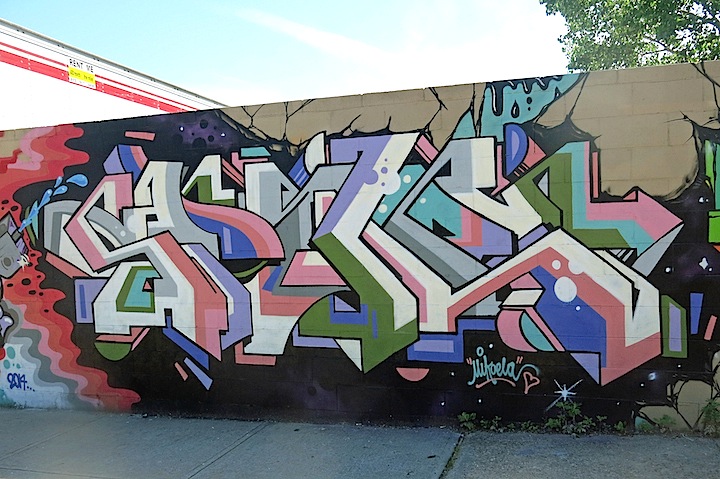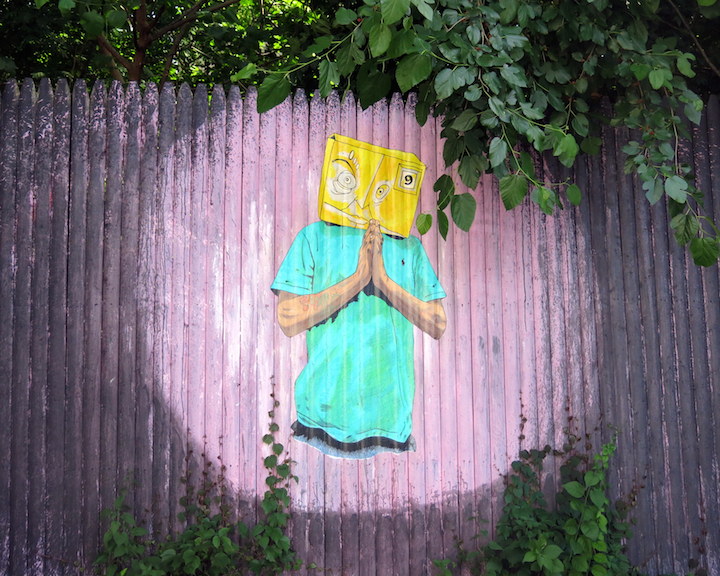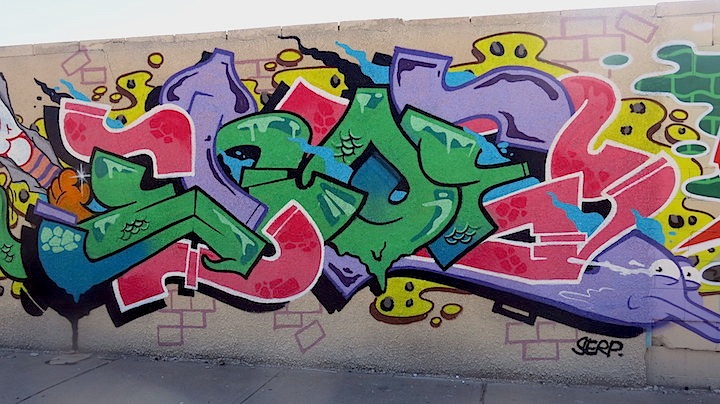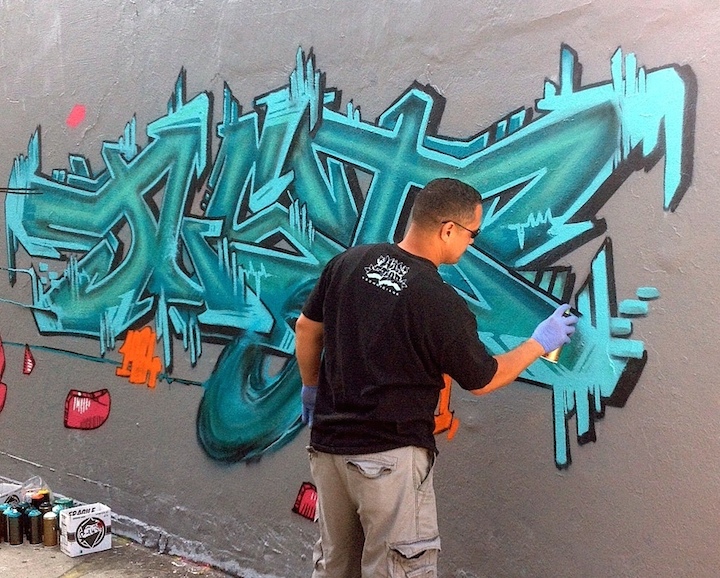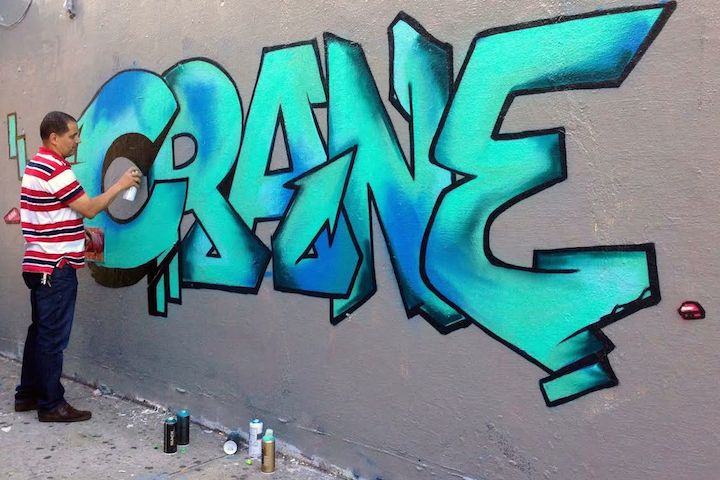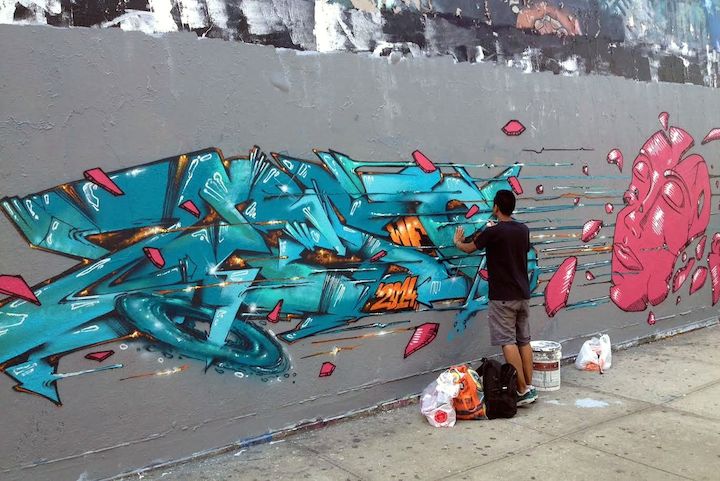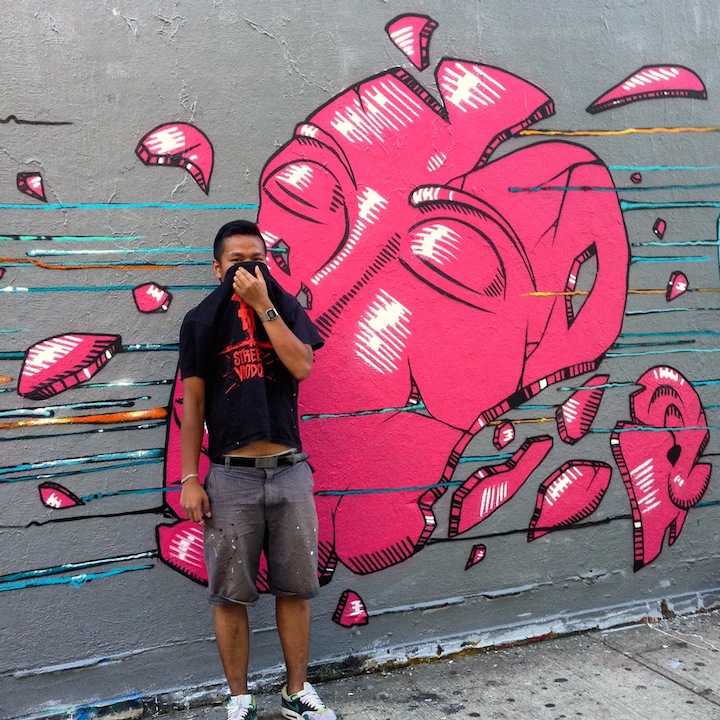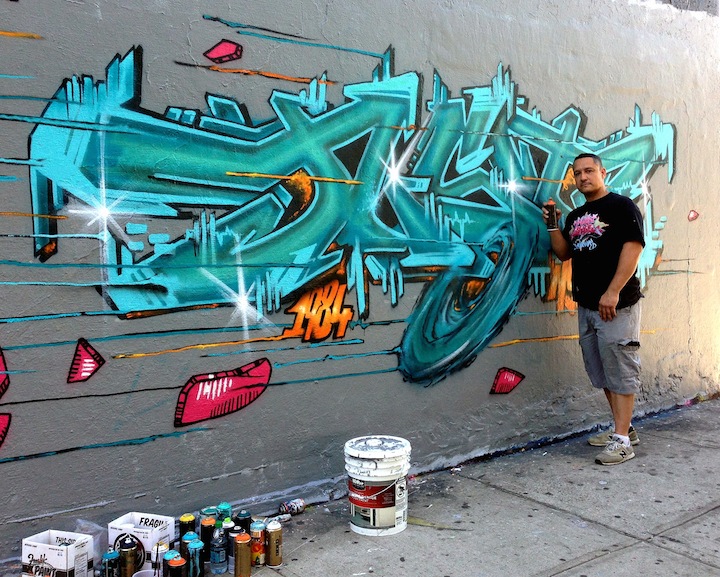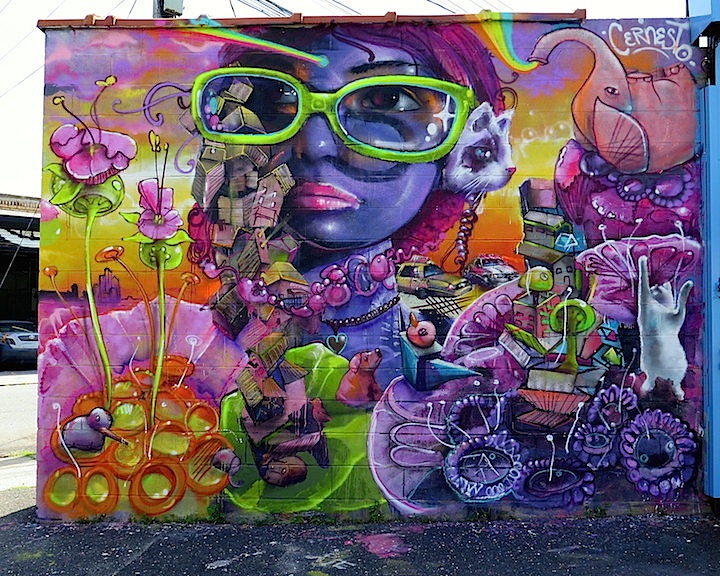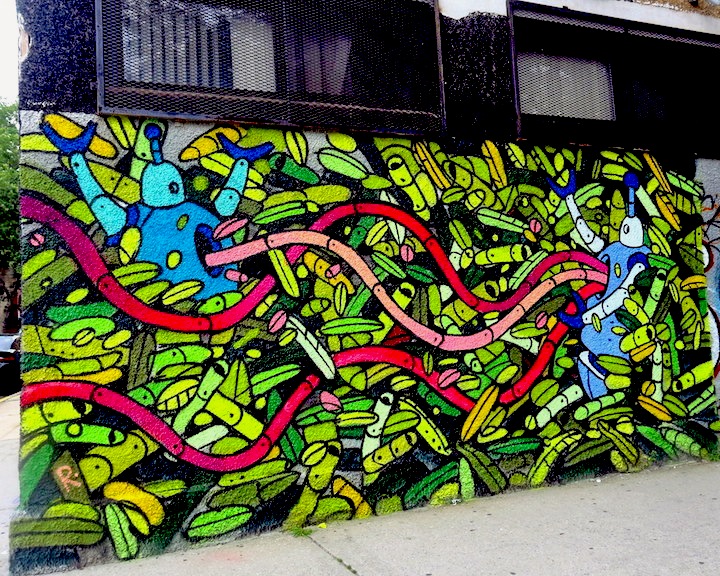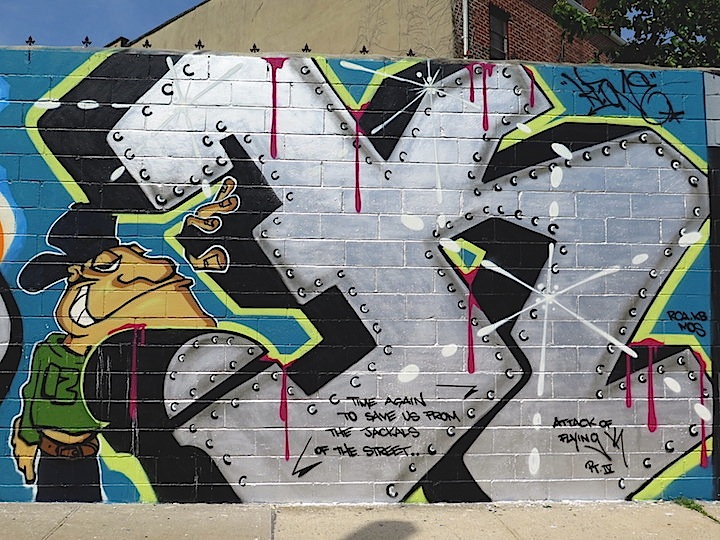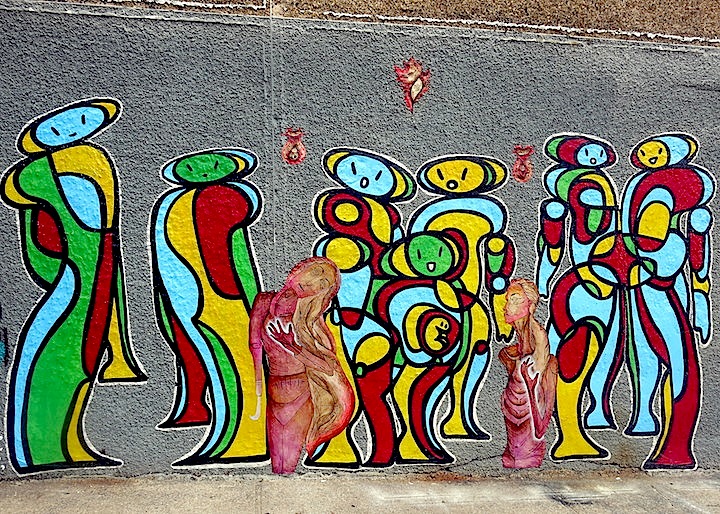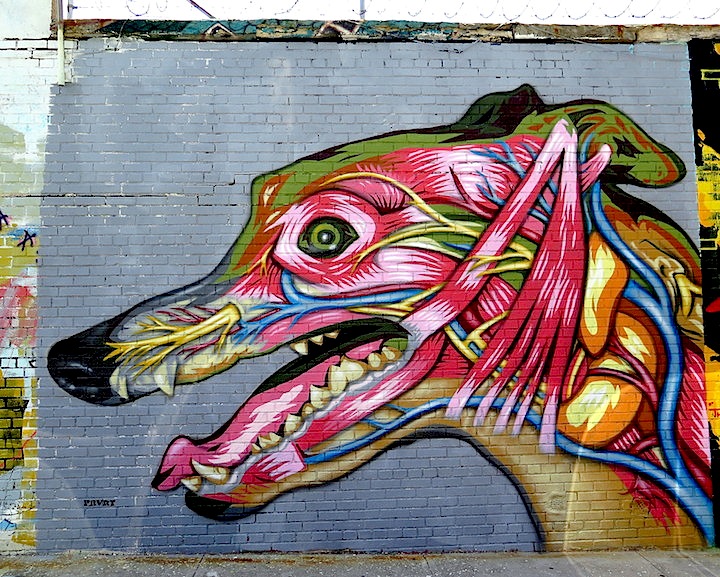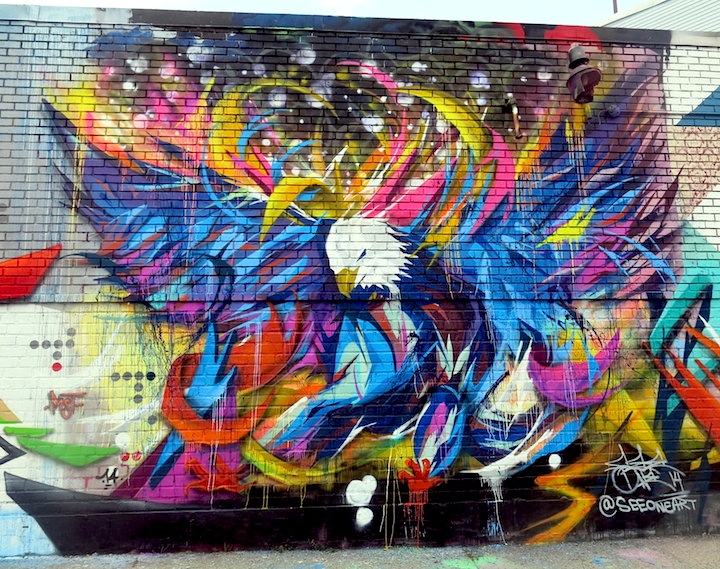With cameras in hand, Leanna Valente has spent the past 15 months photographing graffiti writers and street artists in progress. She now has over 400 photos signed by the artists. I recently had the opportunity to speak to Leanna about her brilliant Instant Art Exposure project and more:
Have you any early memories of graffiti or street art?
I remember first seeing graffiti as a young child. It was right down the block — under viaducts and bridges — from where I grew up in Buffalo. I loved it at first sight!
Have you, yourself, done any graffiti?
When I was about six, I attempted some bubble letters. And I still give it a try while doodling on a napkin!
What about other art forms?
I’ve been doing art – of one kind or another — for as long as I can remember.
Any particular styles or genres?
Mainly mixed-media works of acrylic, spray paint, fabric and photography.
Have you shown your work in galleries or formal settings?
I started showing in galleries in 2003 while living in Atlanta. I also showed in Miami, in Southern California, in Buffalo and at alternative spaces in Brooklyn in 2010.
Have you studied art in a formal setting?
I’m basically self-taught. I’ve studied art informally at FIT here in NYC and at the Atlanta College of Art/SCAD when I was living in Atlanta, Georgia.
Can you tell us something about your photography projects?
My series Extreme Fashion Window Design in NYC focuses on extreme fashion window designs in Manhattan portraying the glamour and grit of the city. Another series Trashion focuses on the exclusive branding found in our city’s trash. And my Instant Art Exposure project documents NYC’s street art and graffiti scene.
You are obviously quite passionate about street art and graffiti.
Yes, I have been addicted to it for as long as I can remember, and I officially started documenting it in 2007. I love its unique beauty and grand size. It’s gutsy and challenging. Just seeing it gives me an adrenalin rush!
I can relate to that! When did you begin this NYC project?
I became avidly serious about it about 14 months ago at Welling Court while watching Kingbee paint. He was the first to sign a photo.
And we all love your shots that the artists sign. It’s a brilliant concept. I wish I had thought of it myself! Did anything in particular inspire it?
Through documenting street art, graffiti and art/fashion mixes for my blog, I became even more interested in documenting the artists “in process.” It became my way of paying respect to them and the hard work they put into each piece on the walls. I felt that it was a unique and personal addition to the black book. And when artists began to respond enthusiastically, I continued.
Where is the project headed?
Well, people keep on asking me what I’m doing with it. Originally I was just doing it for myself. It was meant as a personal diary of photos to hang on my wall. But artists I’ve photographed and other people in the scene have suggested that I follow up on publishing a book and launching an exhibit that feature the works. And so in addition to what I do with my standard photography equipment, my primary focus now is on this project. Talks are now in the works for a series of books, gallery shows and select prints. I will never sell the originals, but I will choose, with the assistance of the artists, a select number to make into prints.
That sounds great! Who are some of the artists have you photographed?
They range from such legends as Blek le Rat, Lady Pink, Charlie Ahearn, Lee Quinones, Crash, Futura and Kenny Scharf to contemporary masters such as Shepard Fairey, Logan Hicks, Sp.One, Wane, Chris Stain, Billy Mode, Stik, Stinkfish, RWK and Icy and Sot. And I can’t imagine ever stopping!
Note: You can follow Leanna on Instagram at @leannav & #instantartexposure, in addition to her blog and her soon-to-be-launched website www.instantartexposure.com.
Interview conducted and edited by Lois Stavsky.
Leanna’s photos: 1. Buff Monster 2. Veng RWK 3. Hoacs 4. Queen Andrea 5. Rubin & Joe Iurato
{ 1 comment }
